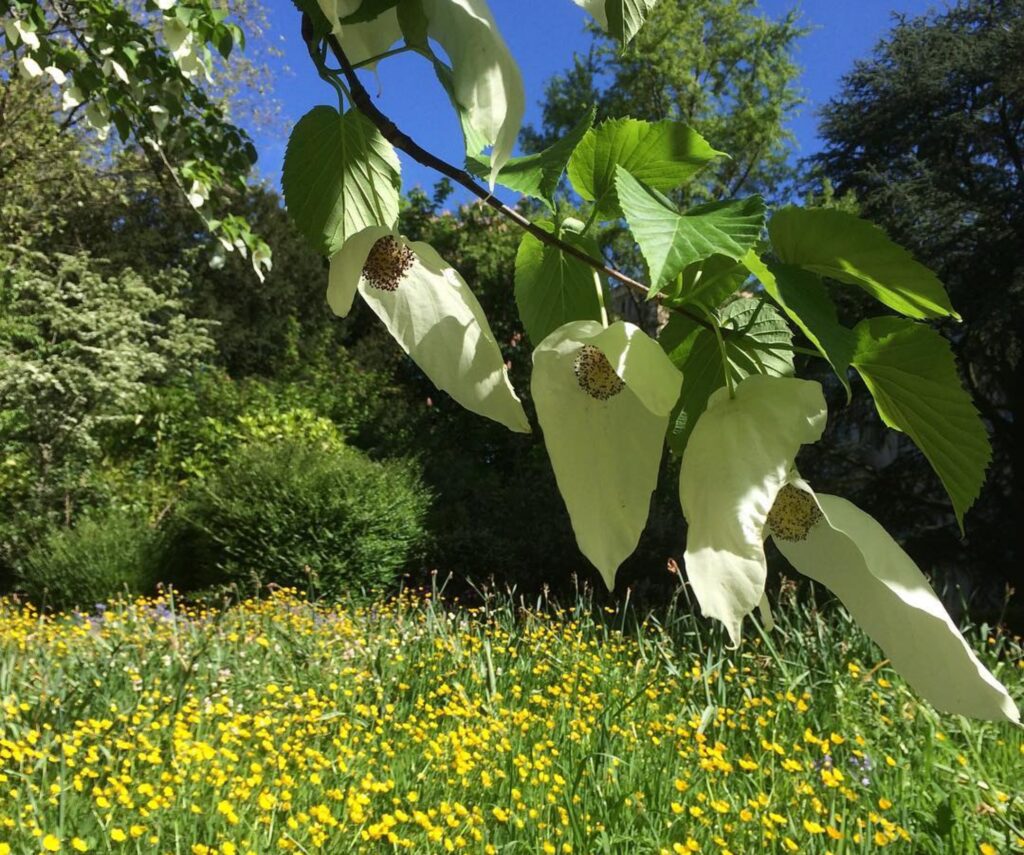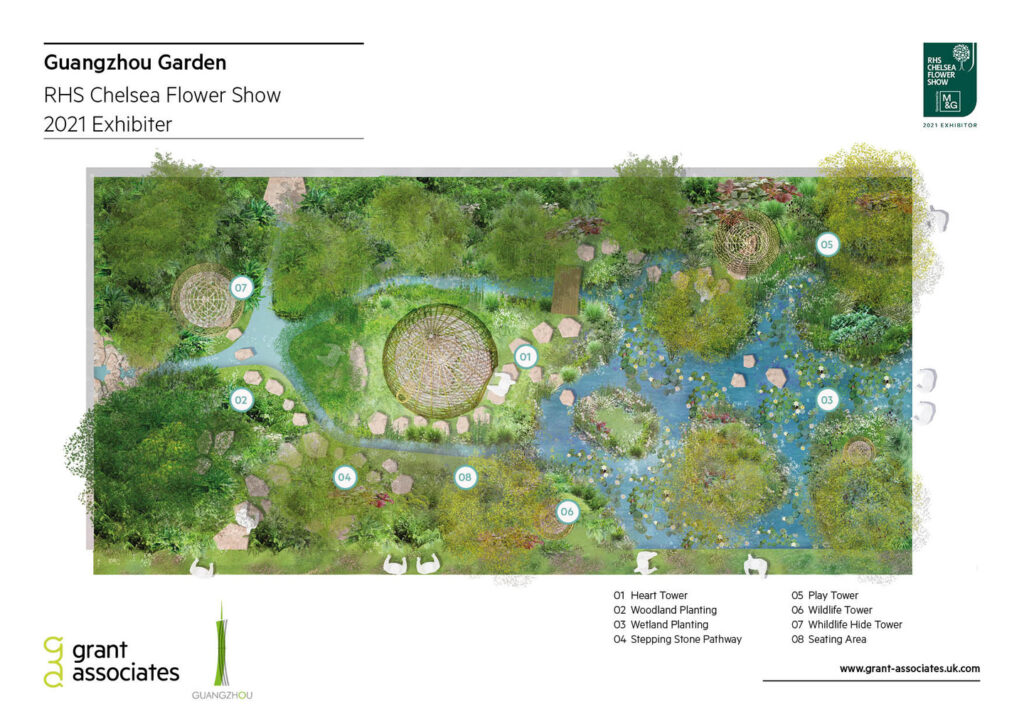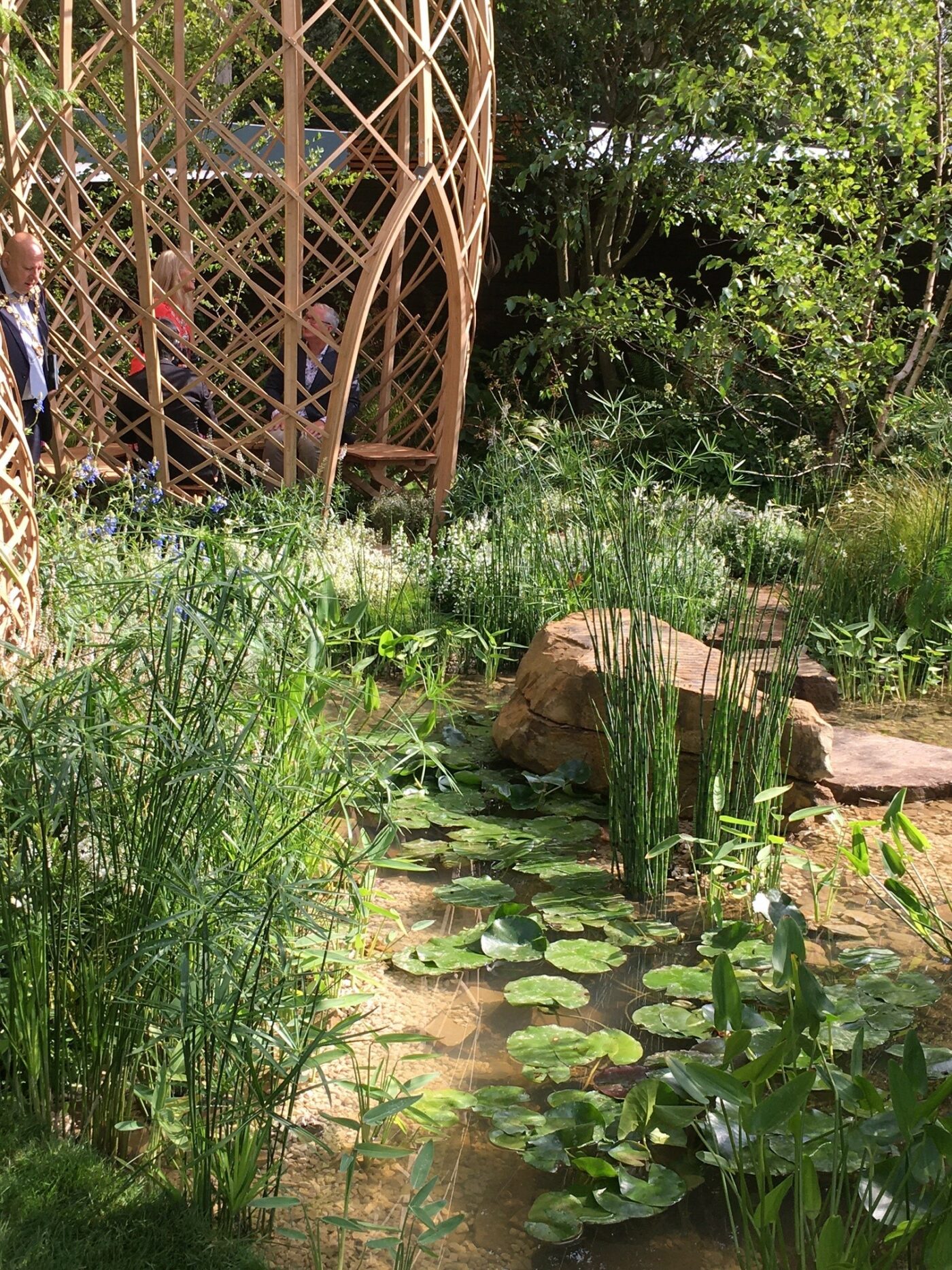Image shows: The Guangzhou Garden at the Chelsea Flower Show
An award-winning Chelsea Flower Show garden is leading the way in environmental sustainability as it takes root here in the city. Nicholas Wray, curator at the University of Bristol Botanic Garden, tells us more about the upcoming Guangzhou Garden opening.
In southern China, within the Guangdong province, an enormous mega city with a population of 15.3 million people is bonded in ‘sister city’ friendship with Bristol. This relationship between Bristol and Guangzhou was cemented in 2001, when a sister city agreement was signed, and then further strengthened in 2013 through the signing of a new Bilateral Agreement between the two city governments. Both agreements were facilitated by the Bristol & West of England China Bureau.
Throughout this time cultural exchanges, gifts, and ceremonies have strengthened the bond, and, in 2021, the city of Guangzhou gifted to the citizens of Bristol its multi award-winning RHS Chelsea Flower Show 2017 Garden. The Guangzhou Garden, which won a prestigious gold medal and was crowned best in show, was designed by Peter Chmiel with Chin-Jung Chen of Grant Associates in Bath.
It was inspired by a philosophy of reconnecting people and nature, while also highlighting the benefits of responsible city planning and sustainable use of natural resources, particularly water. The entire prize-winning garden has been rebuilt here at the University of Bristol’s Botanic Garden.
Inspired by the holistic landscape stewardship programme of environmental planners in Guangzhou, the garden features a pool of water, trees, shrubs, shelters, green foliage, and moisture loving perennials including plants in the ginger family. The plant mix from the Chelsea Flower Show Garden was not relocated to Bristol as some of the semi-mature trees were over a ton in weight. Instead, the planting list has been reimagined to feature plants entirely Chinese in origin.

The propagation project
Staff at the University’s Botanic Garden have been propagating plants from the garden’s extensive Chinese plant collections and networking with other botanical collections and specialists’ nurseries to create a planting design that reflects the appearance of the luxuriance of the sub-tropical flora of Guangzhou. This is a challenging task as Bristol’s climate is temperate.
Careful understanding of the garden’s microclimate will enable some plants to be cultivated throughout the year, but with 10% of the garden being lifted in autumn and placed under winter protection, this has allowed a diverse collection of Chinese plants to be planted. In time as the garden matures, a sub-tropical garden will appear.
This will include the largest evergreen hardy plant that can be cultivated outside in the UK, Delavay’s Magnolia, Magnolia delavayi. Growing in the forests of southwest China, this handsome species has large, up to 40cm long, matt, dark green leaves, which are grey-green on their underside. The plant is a welcome sight in winter when its handsome evergreen foliage is at its most prominent. In August, huge, creamy-white flowers with thick, waxy petals appear. These are highly fragrant, particularly at night and are borne in succession until the end of September. This plant turns heads when in flower as each bloom can be as much as 30cm in diameter and fill the evening air with scent.
Chinese trees
Other trees will form a canopy and provide shade, one beautiful Chinese tree grown here is the Handkerchief (or Dove) tree Davidia involucrata. Native to south and eastern China, it is found growing in mountain forests in Northern Yunnan, Sichuan, Guizhou, West Hubei and West Hunan provinces. Its scarce in the wild and listed by the International Union for the Conservation of Nature as a ‘red data’ species. Habitat loss has seen its numbers drop. The genus Davidia has only a single species and is scientifically named after Father Armand David (1826-1900), known as Pere David, a French Vincentian Missionary who lived in China. He sent the first dried specimens to Paris in 1869.
The tree has handsome fresh green heart-shaped foliage. Flowers are borne in compact, roughly spherical reddish purple-brown heads, about 2cm in diameter. These are backed by a pair of huge papery white bracts, the longest being up to 30cm in length. Bracts and flowers emerge together in late spring, usually May, and flutter in the breeze giving rise to the common name Handkerchief (or Dove) tree. In the wild, trees growing in forests can reach 30m tall. Despite this large size, trees in Britain are widely planted in gardens and this handsome tree will make a big impact when it starts to flower in the Guangzhou Garden.

Forming an upright scrub is the Chinese Angelica, Aralia elata. This large shrub is widespread across most of China, Korea, Japan and the Russian Far East. It grows in forest margins, thriving in shade, but will also grow in sun. It has long been cultivated both in China and Japan for its architectural foliage and stems which have ornamental value in summer and winter. These erect stems have grey bark with prickles reaching heights to 2 to 4 metres. The handsome foliage is double-pinnate and up to 120cm long giving it a delicate and lightweight appearance. In autumn, foliage fades to pale yellow before falling, leaving the erect stems. Flowers are small, white and produced in large numbers in a huge open head. If pollinated a small black fruit appears. This beautiful shrub is so useful in urban gardens and with its cultivation history going back thousands of years it rewards with interest for all who grow it.
The Guangzhou Garden contains a fossil tree, the Dawn Redwood, Metasequoia glyptostroboides. This is an unusual conifer as it is deciduous, with soft feathery green foliage that turns bronze in autumn. It was first described by Dr Shigeru Miki from Kyoto University from 150 million-year-old fossils of the Mesozoic era. Dr Miki noticed its divergent leaf form was different to those of the known sequoia tree and in 1941 he named his findings Metasequoia.
The tree, which is still threatened from illegal logging in its native China, is now commonly planted around the world. In addition to its beauty, particularly when autumn foliage turns rusty-red, it has practical qualities and is now being planted as a street tree, because it tolerates poor soils, compaction, and its leaves rid themselves of dirt deposits by falling in autumn. The tree is planted now as a street tree in Bristol and can be seen in the central reservation on the A4018, heading North to Old Crow roundabout in Westbury-on-Trym, and large specimens can be seen as street trees on Lower Ashley Road. This tree is associated with water, but can survive dry soils too.
Balancing nature with city planning
The garden also highlights the benefits of responsible city planning and how planners must work in harmony with nature to better connect people with the natural world. With a focus on climate change, it’s an eco-garden with an aim to make a difference. The University of Bristol has strong relationships with universities in Guangzhou and cities across China. Around 3,400 Chinese student’ currently study at the University each year and make Bristol their home. This new Guangzhou Garden, together with our existing Traditional Chinese Medicinal Herb Garden, will help our Chinese students feel at home and provide a focus for workshops, tours and a sharing of knowledge.
The new Guangzhou Garden will formally open Wednesday 1 May by the university’s vice-chancellor and president Professor Evelyn Welch. There will be a short talk by the designers Peter Chmiel and Chin Jong Chen from Grant Associates of Bath, who designed the multi award-winning garden, and students from the Bristol Chinese Students Association will join the opening. Botanic Garden curator Nicholas Wray will explain about the use of the new planting and how the garden has been adapted to its new Bristol home.
botanic-garden.bristol.ac.uk



